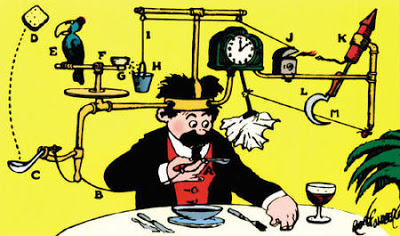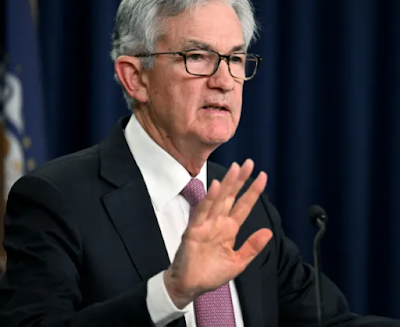 The consensus narrative from the Jackson Hole Symposium was the Yellen and Draghi used their speeches to argue against dismantling financial regulation and the drift toward protectionism. Many cast this as a push against US President Trump, but this may be too narrow understanding.
The consensus narrative from the Jackson Hole Symposium was the Yellen and Draghi used their speeches to argue against dismantling financial regulation and the drift toward protectionism. Many cast this as a push against US President Trump, but this may be too narrow understanding.
Many investors were looking for policy clues, but these were not forthcoming. The December Fed funds futures contract was unchanged, underscoring that although the dollar sold off hard, it was not due to altered Fed views. The OIS did move Europe before the weekend, and it was in the direction of increasing the odds that the negative 40 bp deposit rate remains steady through at least the middle of next year.
The day before Draghi’s Jackson Hole speech the OIS implied almost a 90% chance that the deposit rate would remain at -40 bp at the end of this year and a nearly 75% chance it is still there by the end of June 2018. At the close of business before the weekend the respective odds were 94% and 78%. Now the odds are nearly 98% and 85% chance for unchanged policy in December 2017 and June 2018.
Some suggest that this was likely Yellen’s last speech at Jackson Hole as Fed Chair. She went out swinging. To the extent, her speech was not addressed to a global audience, but an American one, her defense of financial regulation was likely aimed as much at Congress as it is to the President. Moreover, recall that the Fed’s semiannual report to Congress that was delivered last month, there was an extended annex defending the need for regulation, which does not appear to have curtailed lending or bank profitability.
If it was Chair Yellen’s last appearance at Jackson Hole, it could very well be Draghi’s as well. He does not attend all Jackson Hole Symposiums. His term is up in 2019. Although Yellen’s chances of being reappointed as slim, Draghi’s chances are nil.
Draghi touched on a theme that the Dallas Fed President Kaplan has also addressed. It is the relationship between monetary policy and the regulatory environment. The accommodative monetary stance that was necessitated by the weak growth impulses and the threat of deflation could undermine financial stability. A strong regulatory framework is needed to complement the appropriate monetary policy.
Draghi said: “Specifically, when monetary policy is accommodative, lax regulation runs the risk of stoking financial imbalances. By contrast, the stronger the regulatory regime that we have now has enabled economies to endure a long period of low interest rates without any significant side-effects on financial stability.” Many central bankers likely agree with this assessment, and it has become more salient as the recoveries have evolved.
If this was a veiled criticism of Trump, it is not new. Draghi paraphrased a speech he had delivered three months ago. Draghi seemed more interested in defending the work by the Financial Stability Board and the Basel committees than making a point about America’s Dodd-Frank regulation. Even |Draghi’s comments about trade protectionism did not seem directed to the US as much as a broader development: Citing World Bank data, Draghi noted that temporary trade barriers have risen from about 1% of products to 2.5% now. The same pattern, he says, applies to anti-dumping duties as well.
The second point that Draghi made which was largely overlooked was a short reference to Karl Polanyi’s work, the Great Transformation. Draghi understands the drift toward protectionism within the framework Polanyi described. Polanyi discussed a two-part movement. A period of liberalization, or the unleashing of market forces, which is followedby pushing back and a reassertion of social control. Ironically, Draghi sees trade protectionism as such a push back, which he calls “society’s natural response,” yet he does not see the new regulatory regime as part of the same movement.
I drew extensively on Polanyi’s insight for my new book (Political Economy of Tomorrow). The Great Transformation that Polanyi discusses is the rise of the modern political economy out of traditional society and the turning of the factors of production (land, labor, and capital) into commodities (that can be bought and sold at will). Each of the factors organizes to minimize the disruption caused by the rupture of traditional society and relationship, and their replacement by the “cash-nexus.” Farmers organize cooperatives. Capital merges with other capitals as in pools, trusts, corporations and other such organization. Workers unionize. Polanyi’s second movement is a reassertion of social control over the omnipresent market.
The recent protectionism could be in response to the great wave of liberalization that is associated with Reagan-Thatcher. However, it also seems to be linked to the integration of China into the world economy. This is a bit different than Polanyi’s second movement. The economic rise of China is among the most important and difficult economic challenges. Some may suggest that the problem lies with trade liberalization and allowing China to join the WTO in 2001. We suspect that whether or not China joined the WTO, it was still a formidable challenge. The WTO not only provides best practices, but also a conflict resolution mechanism.
Draghi and Yellen’s remarks at Jackson Hole did not reveal anything about what their respective central banks are going to do next month. The push for financial deregulation and protectionism is best understood broadly and not simply as a thinly veiled criticism of the US President. While investors habitually see the link between the prices and monetary policy, Draghi and other central bankers are telling us something important in discussing the link between monetary policy and the regulatory regime.
Are you the author? Previous post See more for Next postTags: ECB,Federal Reserve,newslettersent,Political Economy of Tomorrow




































